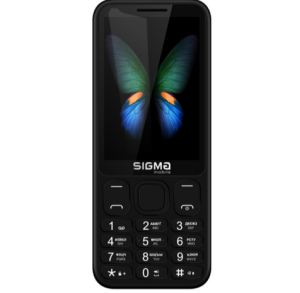
There is always something special about the things we leave behind. It may not always be the best, but a certain charm of these old, simple objects and technologies stays with us. This was the case with cell phones. Before touchscreens became mainstream, there were push-button phones – reliable, simple, and seemingly indestructible. Although they have given way to modern smartphones, they have left us not only with memories, but also with many unforgettable moments.
The era of push-button phones
One of the greatest achievements of old phones was their simplicity. There were no complicated menus, no apps, and no constant updates. There were just a few buttons on the panel to make calls, send SMS messages, and check the time. Push-button phones never aspired to be multifunctional “superheroes”. They had one purpose: to connect people. And yet, this simplicity was eye-catching. Instead of endless settings, applications, and updates, a few simple functions were enough: calls, SMS, clock, and games, which, by the way, were sometimes as exciting as modern smartphone games. We all remember the first time we dialed a number on a small screen or played a game when we had nothing to do on the bus. Each keystroke required precision, and writing a simple “Hello!” was a three-step epic! But that’s what created that unique atmosphere. We may not have been able to type messages quickly, but each word was more meaningful and important. Of course, there were many such “telephone” moments in our lives, and they left their warm traces in our memory.
Legendary brands: Nokia, Samsung, Motorola
We can’t help but mention the legendary brands that have made push-button phones a staple in the lives of tens of millions of people. Nokia is probably the most famous manufacturer whose Nokia 3310 model has become a symbol of reliability and durability. This phone has survived all kinds of tests: falls, bumps, and even being submerged under water. Motorola and Samsung were also important brands in the market. For example, the Motorola Razr is a style and design icon that first combined classic buttons with the elegance of a folding case. And many people remember the famous click when the lid was closed. All of this has become part of the culture.
A phone that was more than just a means of making calls
Push-button phones were not just a means of making calls, but also a part of personal life. It was the first step towards the development of mobile communications. Many of us got our first phone when we were young, and it became a symbol of growing up. All these moments of the first Nokia, the first SMS, the first unsuccessful attempts to send a beautiful birthday or greeting card, the first mobile call, when you dialed the number of your loved one or closest friend with trembling hands, were very important. In fact, every call was important, and every message could not be sent with stickers/emoticons – only words. The phone became a kind of friend that was always at hand, even if it was just to read a few lines at the top of the notification screen. The absence of the Internet only increased the importance of the process of communication itself – you called or texted. They had their own special rhythm of life. We weren’t as accessible 24/7, there were no social networks and messengers that captivated us for hours.
A phone that could not be lost in a few hours
Another huge advantage of push-button phones is their battery life. The absence of battery-consuming apps and a large battery ensured at least several days of operation without recharging. Today’s smartphones, with all their rich functionality, have a problem – a battery that needs to be charged several times a day. It doesn’t matter what you do on your phone, it still almost always needs to be charged. But the battery of the old Nokia 3310 lasted for a whole era – more than a week without recharging, and no stress if you forgot to charge the phone!
What’s left of push-button phones?
In a world where we are constantly experiencing new technological changes, it’s hard not to notice how much the process of using phones has changed. Smartphones in 2024 offer incredible capabilities: from ultra-high-resolution cameras to a multitude of apps that replace many other devices. At the same time, there is one significant advantage of the old models: they were not too complicated, not overloaded with functions and requests, and most importantly, they had their elegant simplicity. They became part of our youth, the first steps into a new world of communications. It’s hard to imagine that cell phones didn’t have cameras, instant messengers, or Internet access. Nowadays, push-button models are reappearing on the market, but in a different context. They have become popular among those who want to reduce the amount of time spent on the Internet or for the elderly. Despite the fact that everyone has long since moved on to new smartphones, these old phones will always remain in our memory as a symbol of the simplicity and romance of mobile communication. And even though we may not reach for them anymore, each of us is probably nostalgic for those days when things were much simpler…

